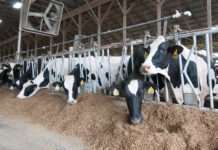American consumers are enjoying increasingly more opportunities to buy food directly from farmers and to patronize grocery stores and restaurants that offer local foods. Policymakers have taken notice, and as part of Congress’s FY14 Appropriations Bill, the House Agriculture Committee asked the Economic Research Service (ERS) to report on the scope of local and regional food systems and recent national trends. The result – Trends in U.S. Local and Regional Food Systems: Report to Congress – details the latest economic information on local food producers and consumers, and reviews policies supporting local food systems.
The ERS report poses questions like how rapidly direct-to-consumer farm sales are growing, some characteristics of local-food farms, and the level of organic farm participation in local food sales. It addresses consumer issues such as willingness to pay premium prices for some local foods, and how local food prices compare with those at retail outlets.
According to the report, 163,675 farmers sold an estimated $6.1 billion in locally marketed foods in 2012. Farms with local food sales represent 7.8 percent of U.S. farms, and local food sales account for an estimated 1.5 percent of the value of U.S. agricultural production. Although 85 percent of all local-food farms are small, with gross revenues under $75,000, over two-thirds of all local food sales are by farms with $350,000 or more in gross revenues.
As the report notes, farmers have two main channels for marketing their food locally – directly to consumers (at farmers’ markets, roadside stands, farm stores, etc.) or through “intermediated marketing channels” (grocers, restaurants, schools, universities, hospitals, and regional distributors). Of the total local-food farms and sales, 48,371 farmers sold an estimated $4.8 billion in 2012 through intermediated marketing channels.
Regional “food hubs” that serve intermediated food channels are becoming integral in the growth of local food systems. These “food hubs” are collaborative enterprises that aggregate locally sourced food to meet wholesale, retail, institutional, and even individual demand. Their numbers have increased almost threefold between 2007 and 2014, to a total of 302. Food hubs’ market outreach activities and technical services provide market opportunities for midsized farms and small and beginning farmers.
Such up-to-date information on local foods is critical for understanding the evolution, growth and effects of local and regional food systems. Learn more about local foods – direct-to-consumer and intermediated channels – in the ERS report.
– See more at: http://blogs.usda.gov/2015/02/03/local-food-systems-what-do-we-know-about-national-trends/#sthash.AlVMYrZy.dpuf



